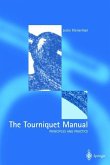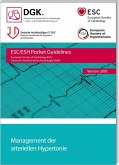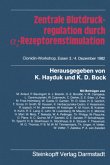The Tourniquet Manual - principles and practice provides a comprehensive and detailed account of the safe use of the tourniquet by using a physiological approach which ensures good practice. Starting from a historical background the reader learns the detailed effects of ischaemia on the vulnerable tissues, especially muscle and nerve. The effects of releasing the tourniquet on the systemic circulation and the complicated biochemistry of the ischaemia-reperfusion response are explained. Complications and good practice are discussed. There is a chapter on the latest technological advances in tourniquets. This book provides a coherent account of the subject and is an invaluable source of references. It will help avoid medicolegal problems and promote good practice by surgeons, anaesthetists and operation theatre technicians alike and should be in every theatre office.
Why write a book on the tourniquet? The tourniquet is used routinely in op- ating theatres throughout the world, but as far as I know there is no single book that surveys the considerable literature that has accumulated. If used sensibly, the tourniquet is a safe instrument. Most of the few complications seen with its use are preventable. However, when something untoward happens, the tour- quet suddenly becomes an interesting subject, particularly if there is the likelihood of medicolegal consequences. This book summarises the scientific background of the tourniquet and describes a safe physiological approach to preventing complications. Examples of medicolegal problems are included. Considerable progress had been made since Lister first excised a tuberculous wrist joint in a bloodless field. Many researchers have studied the effects of ischaemia and pressure on nerves and muscles. Tourniquets have entered the age of computers and are now much more sophisticated. Despite this, there is still much dogma surrounding the tourniquet in operating theatres and in textbooks. This book is aimed at orthopaedic surgeons, anaesthetists and op- ating-theatre staff. I hope that this short text will stimulate a more widespread interest in the tour- quet and improve safe practice.
Hinweis: Dieser Artikel kann nur an eine deutsche Lieferadresse ausgeliefert werden.
Why write a book on the tourniquet? The tourniquet is used routinely in op- ating theatres throughout the world, but as far as I know there is no single book that surveys the considerable literature that has accumulated. If used sensibly, the tourniquet is a safe instrument. Most of the few complications seen with its use are preventable. However, when something untoward happens, the tour- quet suddenly becomes an interesting subject, particularly if there is the likelihood of medicolegal consequences. This book summarises the scientific background of the tourniquet and describes a safe physiological approach to preventing complications. Examples of medicolegal problems are included. Considerable progress had been made since Lister first excised a tuberculous wrist joint in a bloodless field. Many researchers have studied the effects of ischaemia and pressure on nerves and muscles. Tourniquets have entered the age of computers and are now much more sophisticated. Despite this, there is still much dogma surrounding the tourniquet in operating theatres and in textbooks. This book is aimed at orthopaedic surgeons, anaesthetists and op- ating-theatre staff. I hope that this short text will stimulate a more widespread interest in the tour- quet and improve safe practice.
Hinweis: Dieser Artikel kann nur an eine deutsche Lieferadresse ausgeliefert werden.
From the reviews of the first edition: "The use of tourniquet in orthopaedic surgery is a universal practice that is accepted with little question. Leslie Klenerman has had a life-long interest in the tourniquet and has conducted a considerable amount of research on its use and misuse. ... He has produced a succinct summary of the physiology and application of the tourniquet ... . a very readable account that must be read by all who may require use of this instrument." (Frank Horan, Journal of Bone and Joint Surgery, Vol. 86-B, 2004) "The tourniquet is used daily in orthopaedic practice, and a lot of questions do not have a clear answer ... . This little book covers the history, science and practical use of the tourniquet. ... Complications, which often have medicolegal implication, are well described. This excellent book finds a place in all orthopaedic departments." (M. De Smedt, Acta Orthopaedica Belgica, Vol. 70 (6), 2004) "This is the first manual entirely devoted to the effects and potential complications of tourniquet use in surgery and anesthesia. It summarizes the scientific work published on the subject ... . This original and very clearly presented little manual of 100 pages is of major interest for all tourniquet users, orthopaedic surgeons, anesthetists, and operating-theatre staff. It may also help experts, lawyers and attorneys, since medicolegal procedures can follow the onset of complications related to the use of tourniquets." (Claude Karger, European Journal of Orthopaedic Surgery & Traumatology, Vol. 14 (4), 2004)







